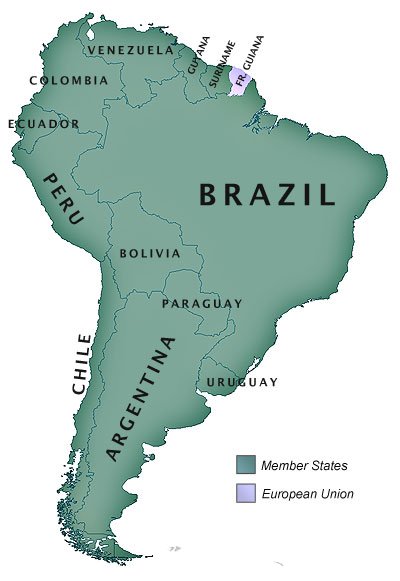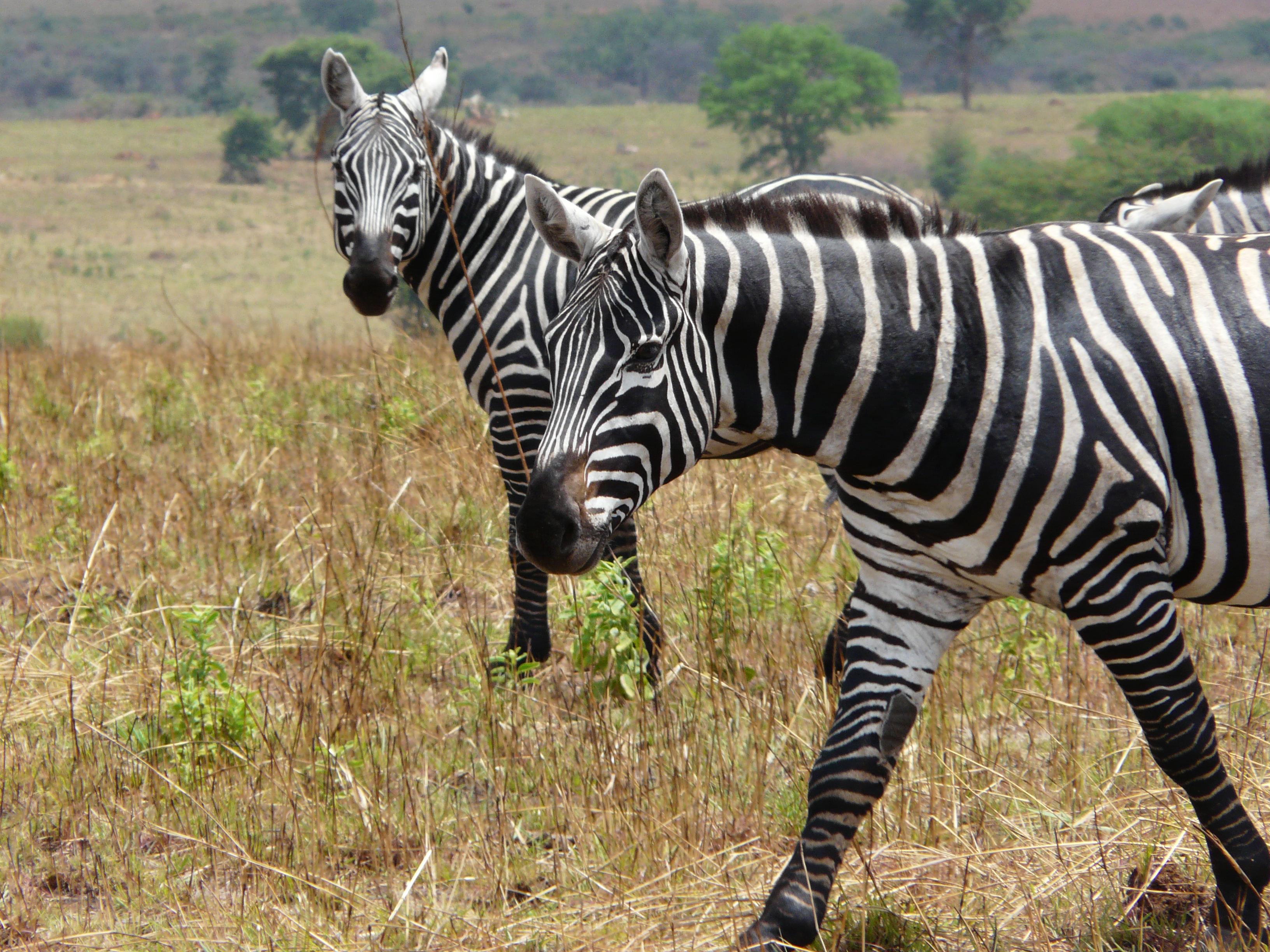|
Tropical And Subtropical Grasslands, Savannas, And Shrublands
Tropical and subtropical grasslands, savannas, and shrublands is a terrestrial biome defined by the World Wide Fund for Nature. The biome is dominated by grass and/or shrubs located in semi-arid to semi- humid climate regions of subtropical and tropical latitudes. Tropical grasslands are mainly found between 5 degrees and 20 degrees in both North and south of the Equator. Description Grasslands are dominated by grasses and other herbaceous plants. Savannas are grasslands with scattered trees. Shrublands are dominated by woody or herbaceous shrubs. Large expanses of land in the tropics do not receive enough rainfall to support extensive tree cover. The tropical and subtropical grasslands, savannas, and shrublands are characterized by rainfall levels between per year. Rainfall can be highly seasonal, with the entire year's rainfall sometimes occurring within a couple of weeks. African savannas occur between forest or woodland regions and grassland regions. Flora includes acacia ... [...More Info...] [...Related Items...] OR: [Wikipedia] [Google] [Baidu] |
Biome Map 07
A biome () is a distinct geographical region with specific climate, vegetation, and animal life. It consists of a biological community that has formed in response to its physical environment and regional climate. In 1935, Tansley added the climatic and soil aspects to the idea, calling it ''ecosystem''. The International Biological Program (1964–74) projects popularized the concept of biome. However, in some contexts, the term ''biome'' is used in a different manner. In German literature, particularly in the Walter terminology, the term is used similarly as ''biotope'' (a concrete geographical unit), while the biome definition used in this article is used as an international, non-regional, terminology—irrespectively of the continent in which an area is present, it takes the same biome name—and corresponds to his "zonobiome", "orobiome" and "pedobiome" (biomes determined by climate zone, altitude or soil). In the Brazilian literature, the term ''biome'' is sometimes used ... [...More Info...] [...Related Items...] OR: [Wikipedia] [Google] [Baidu] |
Baobab
''Adansonia'' is a genus of medium-to-large deciduous trees known as baobabs ( or ). The eight species of ''Adansonia'' are native to Africa, Australia, and Madagascar but have also been introduced to other regions of the world, including Barbados, where several of the baobabs there are suspected to have originated from Africa. Other baobabs have been introduced to Asia. A genomic and ecological analysis further suggests that the genus itself originated from Madagascar. The generic name ''Adansonia'' honours Michel Adanson, the French naturalist and explorer who provided the first detailed botanical description and illustrations of ''Adansonia digitata''. The baobab, however, is also known as the "upside down tree," a name attributable to the trees' overall appearance and historical myths. Baobabs are among the most long-lived of vascular plants and have large flowers that are reproductive for a maximum of 15 hours. The flowers open around dusk with sufficiently rapid movemen ... [...More Info...] [...Related Items...] OR: [Wikipedia] [Google] [Baidu] |
Tropical Vegetation
Tropical vegetation is any vegetation in tropical latitudes. Plant life that occurs in climates that are warm year-round is in general more biologically diverse than in other latitudes. Some tropical areas may receive abundant rain the whole year round, but others have long dry seasons which last several months and may vary in length and intensity with geographic location. These seasonal droughts have a great impact on the vegetation, such as in the Madagascar spiny forests. Rainforest vegetation is categorized by five layers. The top layer being the emergents, or the upper tree layer. Here you will find the largest and widest trees in all the forest, commonly 165 feet (fifty meters) and higher. These trees tend to have very large canopies so they can be fully exposed to sunlight. A layer below that is the canopy, or middle tree layer, averaging 98 to 130 feet (30 to 40 meters) in height. Here you will find more compact trees and vegetation. These trees tend to be more ... [...More Info...] [...Related Items...] OR: [Wikipedia] [Google] [Baidu] |
United States
The United States of America (USA), also known as the United States (U.S.) or America, is a country primarily located in North America. It is a federal republic of 50 U.S. state, states and a federal capital district, Washington, D.C. The 48 contiguous states border Canada to the north and Mexico to the south, with the semi-exclave of Alaska in the northwest and the archipelago of Hawaii in the Pacific Ocean. The United States asserts sovereignty over five Territories of the United States, major island territories and United States Minor Outlying Islands, various uninhabited islands in Oceania and the Caribbean. It is a megadiverse country, with the world's List of countries and dependencies by area, third-largest land area and List of countries and dependencies by population, third-largest population, exceeding 340 million. Its three Metropolitan statistical areas by population, largest metropolitan areas are New York metropolitan area, New York, Greater Los Angeles, Los Angel ... [...More Info...] [...Related Items...] OR: [Wikipedia] [Google] [Baidu] |
Australia
Australia, officially the Commonwealth of Australia, is a country comprising mainland Australia, the mainland of the Australia (continent), Australian continent, the island of Tasmania and list of islands of Australia, numerous smaller islands. It has a total area of , making it the list of countries and dependencies by area, sixth-largest country in the world and the largest in Oceania. Australia is the world's flattest and driest inhabited continent. It is a megadiverse countries, megadiverse country, and its size gives it a wide variety of landscapes and Climate of Australia, climates including deserts of Australia, deserts in the Outback, interior and forests of Australia, tropical rainforests along the Eastern states of Australia, coast. The ancestors of Aboriginal Australians began arriving from south-east Asia 50,000 to 65,000 years ago, during the Last Glacial Period, last glacial period. By the time of British settlement, Aboriginal Australians spoke 250 distinct l ... [...More Info...] [...Related Items...] OR: [Wikipedia] [Google] [Baidu] |
South America
South America is a continent entirely in the Western Hemisphere and mostly in the Southern Hemisphere, with a considerably smaller portion in the Northern Hemisphere. It can also be described as the southern Subregion#Americas, subregion of the Americas. South America is bordered on the west by the Pacific Ocean, on the north and east by the Atlantic Ocean, and to the south by the Drake Passage; North America and the Caribbean Sea lie to the northwest. The continent includes twelve sovereign states: Argentina, Bolivia, Brazil, Chile, Colombia, Ecuador, Guyana, Paraguay, Peru, Suriname, Uruguay, and Venezuela; two dependent territory, dependent territories: the Falkland Islands and South Georgia and the South Sandwich Islands; and one administrative division, internal territory: French Guiana. The Dutch Caribbean ABC islands (Leeward Antilles), ABC islands (Aruba, Bonaire, and Curaçao) and Trinidad and Tobago are geologically located on the South-American continental shel ... [...More Info...] [...Related Items...] OR: [Wikipedia] [Google] [Baidu] |
Southeast Asia
Southeast Asia is the geographical United Nations geoscheme for Asia#South-eastern Asia, southeastern region of Asia, consisting of the regions that are situated south of China, east of the Indian subcontinent, and northwest of the Mainland Australia, Australian mainland, which is part of Oceania. Southeast Asia is bordered to the north by East Asia, to the west by South Asia and the Bay of Bengal, to the east by Oceania and the Pacific Ocean, and to the south by Australia (continent), Australia and the Indian Ocean. Apart from the British Indian Ocean Territory and two out of Atolls of the Maldives, 26 atolls of the Maldives in South Asia, Maritime Southeast Asia is the only other subregion of Asia that lies partly within the Southern Hemisphere. Mainland Southeast Asia is entirely in the Northern Hemisphere. Timor-Leste and the southern portion of Indonesia are the parts of Southeast Asia that lie south of the equator. The region lies near the intersection of Plate tectonics, ... [...More Info...] [...Related Items...] OR: [Wikipedia] [Google] [Baidu] |
South Asia
South Asia is the southern Subregion#Asia, subregion of Asia that is defined in both geographical and Ethnicity, ethnic-Culture, cultural terms. South Asia, with a population of 2.04 billion, contains a quarter (25%) of the world's population. As commonly conceptualised, the modern State (polity), states of South Asia include Bangladesh, Bhutan, India, the Maldives, Nepal, Pakistan, and Sri Lanka, with Afghanistan also often included, which may otherwise be classified as part of Central Asia. South Asia borders East Asia to the northeast, Central Asia to the northwest, West Asia to the west and Southeast Asia to the east. Apart from Southeast Asia, Littoral South Asia, Maritime South Asia is the only subregion of Asia that lies partly within the Southern Hemisphere. The British Indian Ocean Territory and two out of Atolls of Maldives, 26 atolls of the Maldives in South Asia lie entirely within the Southern Hemisphere. Topographically, it is dominated by the Indian subcontinent ... [...More Info...] [...Related Items...] OR: [Wikipedia] [Google] [Baidu] |
Africa
Africa is the world's second-largest and second-most populous continent after Asia. At about 30.3 million km2 (11.7 million square miles) including adjacent islands, it covers 20% of Earth's land area and 6% of its total surface area.Sayre, April Pulley (1999), ''Africa'', Twenty-First Century Books. . With nearly billion people as of , it accounts for about of the world's human population. Demographics of Africa, Africa's population is the youngest among all the continents; the median age in 2012 was 19.7, when the worldwide median age was 30.4. Based on 2024 projections, Africa's population will exceed 3.8 billion people by 2100. Africa is the least wealthy inhabited continent per capita and second-least wealthy by total wealth, ahead of Oceania. Scholars have attributed this to different factors including Geography of Africa, geography, Climate of Africa, climate, corruption, Scramble for Africa, colonialism, the Cold War, and neocolonialism. Despite this lo ... [...More Info...] [...Related Items...] OR: [Wikipedia] [Google] [Baidu] |
Sudd
The Sudd (, Nuer: Baki̱ec, Dinka: Toc) is a vast swamp in South Sudan, formed by the White Nile's '' Baḥr al-Jabal'' section. The Arabic word ' is derived from ' (), meaning "barrier" or "obstruction". The term "the sudd" has come to refer to any large solid floating vegetation island or mat. The area which the swamp covers is one of the world's largest wetlands and the largest freshwater wetland in the Nile Basin. For many centuries the swamp, and especially its thicket of vegetation, proved an impenetrable barrier to navigation along the Nile. The ancient Egyptians failed to penetrate the Sudd and reach the areas south of it. In AD 61, a party of Roman soldiers sent by the Emperor Nero proceeded up the White Nile but were not able to get beyond the Sudd, which marked the limit of Roman penetration into equatorial Africa. For the same reasons in later times, the search for the source of the Nile was particularly difficult; it eventually involved overland expeditions ... [...More Info...] [...Related Items...] OR: [Wikipedia] [Google] [Baidu] |
Equus Quagga
The plains zebra (''Equus quagga'', formerly ''Equus burchellii'') is the most common and geographically widespread species of zebra. Its range is fragmented, but spans much of southern and eastern Africa south of the Sahara. Six or seven subspecies have been recognised, including the quagga which was thought to be a separate species. More recent research supports variations in zebra populations being Cline (biology), clines rather than subspecies. Plains zebras are intermediate in size between the larger Grévy's zebra and the smaller mountain zebra and tend to have broader stripes than both. Great variation in coat patterns exists between clines and individuals. The plains zebra's habitat is generally, but not exclusively, treeless grasslands and savanna woodlands, both tropical and temperate. They generally avoid desert, dense rainforest and permanent wetlands. Zebras are preyed upon by lions and spotted hyenas, Nile crocodiles and, to a lesser extent, African leopard, leopards ... [...More Info...] [...Related Items...] OR: [Wikipedia] [Google] [Baidu] |







